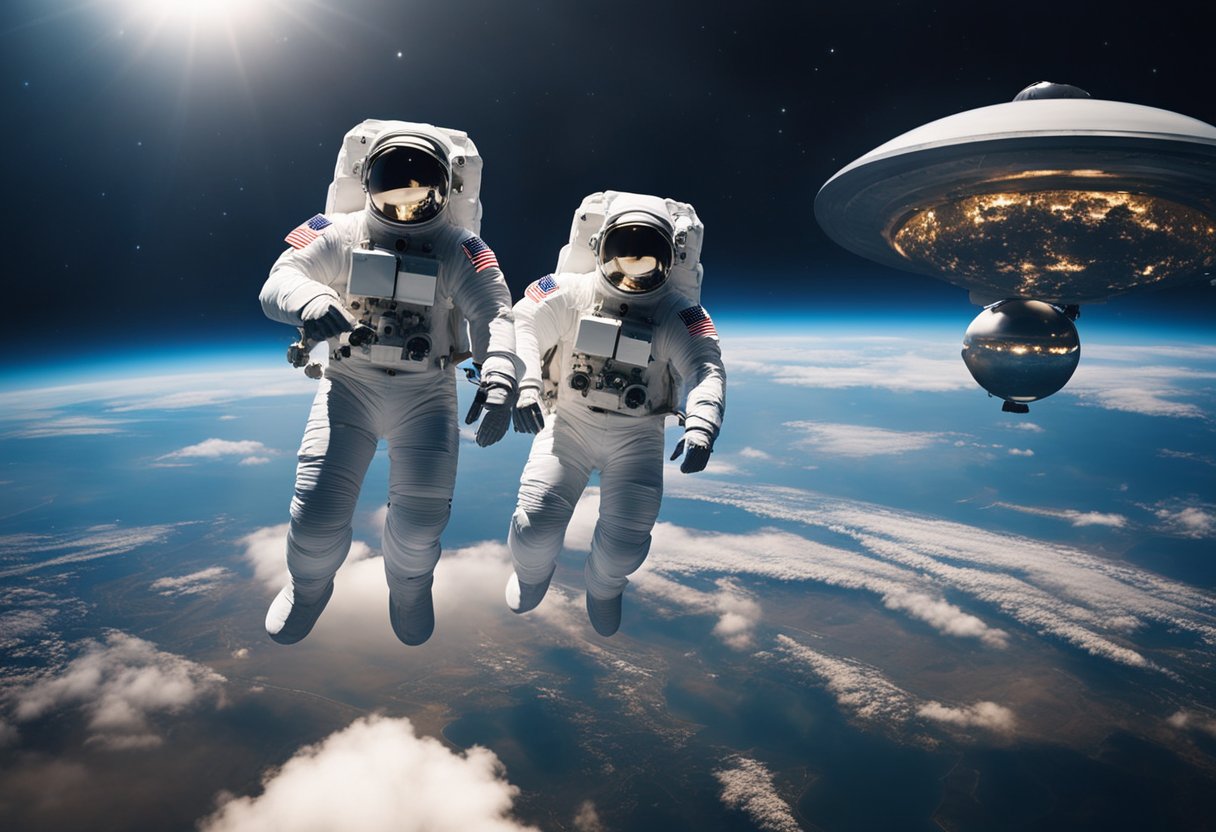
Microgravity, or the state of apparent weightlessness, provides a unique environment for conducting experiments that are impossible under Earth’s gravitational pull. The term “microgravity” refers to the condition where the force of gravity is greatly reduced, creating a microgravity environment that allows researchers and scientists to study various phenomena.
In this near-weightless state, we’re able to observe the effects of the absence of gravity on biological organisms, physical processes, and even the development of new technologies.
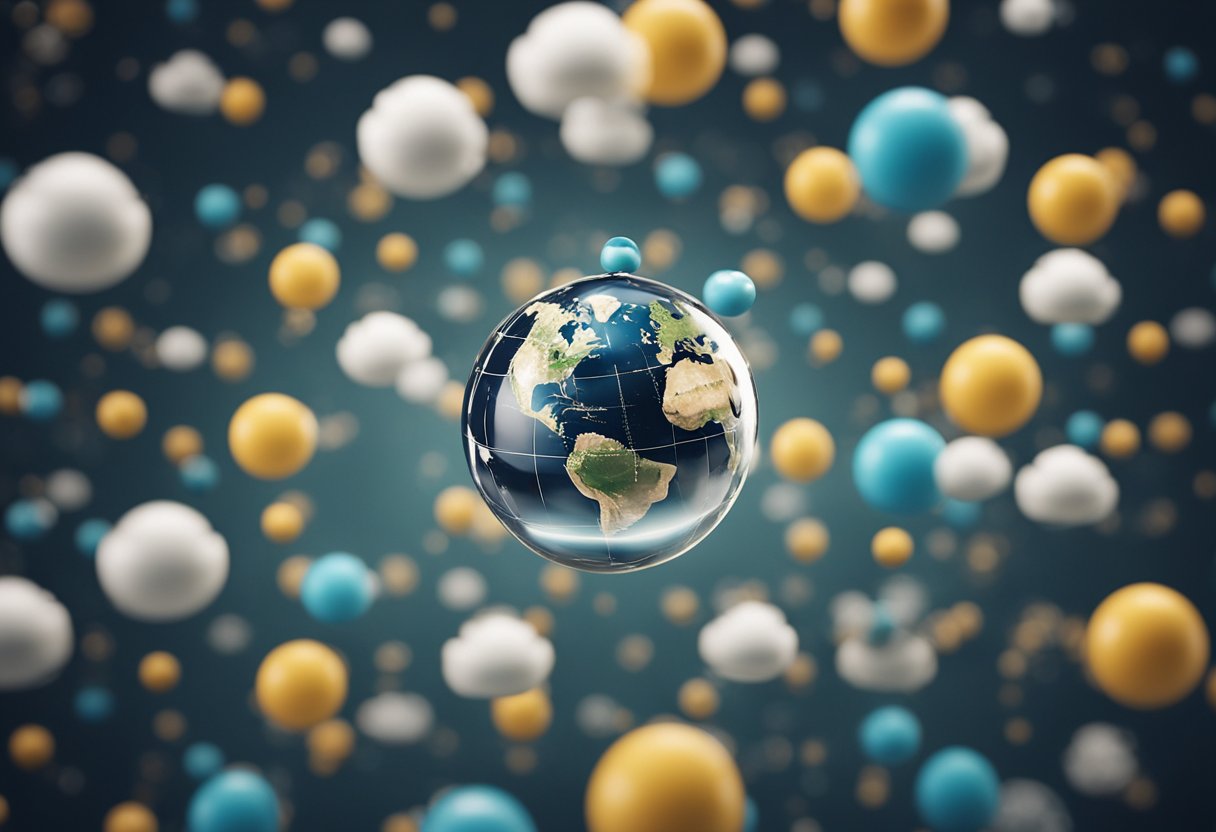
The experience of microgravity has been most extensively realised aboard the International Space Station (ISS), where countless research projects have been conducted. The ISS provides an invaluable platform for prolonged exposure to microgravity conditions, enabling us to study the long-term effects on the human body, the behaviour of fluids and combustion, and the development of new materials.
Moreover, understanding the impact of microgravity has profound implications for our future space endeavours, particularly in terms of health countermeasures and the preparation for deep space missions. As we look toward the expansion of human presence in space, including space tourism, we have been keenly developing technologies to simulate microgravity conditions on Earth to better prepare astronauts and tourists alike for what lies beyond.
In our journey to understand microgravity, it’s essential to grasp its core concept, the nuances of orbital mechanics, and the principles that render us weightless when in orbit. These facets are crucial to comprehend how living and working in space differ fundamentally from our experiences on Earth.
Microgravity, often referred to as zero gravity, is a condition where the force of gravity is not zero but significantly lower than that on Earth’s surface. This state is typically experienced in space, where the gravitational pull is still present but greatly reduced. Despite the common name “zero gravity,” it’s more accurate to say that objects are continuously falling towards Earth but never actually hitting it, due to the high tangential velocity of their orbit. This results in a sensation of weightlessness for astronauts.
The mechanics of Earth’s orbit are foundational to creating microgravity conditions. When a spacecraft achieves a stable orbit around Earth, it’s essentially falling towards the planet but also moving forward swiftly enough that the curve of its fall matches Earth’s curvature. This balance means the craft is in freefall, with gravity acting as the centripetal force necessary for circular motion. Our spacecraft has to maintain a speed of approximately 28,000 kilometres per hour to ensure a stable low Earth orbit.
The principle of weightlessness arises directly from microgravity conditions. When in orbit, everything aboard the spacecraft, including human bodies, is subjected to the same gravitational acceleration. This means there’s no differential force acting on us to give us a sensation of weight.
Objects and people appear to float not because they are unaffected by gravity, but because they are in freefall, moving at the same rate as their surroundings. SpaceVoyageVentures.com discusses this very experience as one of the attractions for potential space tourists.
By keeping our discourse on microgravity focused and factual, we’ve illuminated the fundamentals that govern the counterintuitive phenomena astronauts encounter in space. Our exploration has aligned with the principles of microgravity that are pivotal for both scientific endeavours and the burgeoning field of space tourism.
Microgravity presents a unique environment for astronauts that commandeers significant changes within the human body, as the normal gravitational forces experienced on Earth are absent in the confines of space.
In the realm of space travel, our bodies undergo myriad adaptations. The absence of gravity challenges our homeostatic mechanisms, leading to a host of physiological changes. For example, astronauts experience a shift of fluids towards the head, giving a characteristic ‘puffy face’ appearance. Our immune system is also compromised in this setting, making us more susceptible to infections.
One of the most affected systems in space is the musculoskeletal system. The lack of gravitational resistance leads to muscle mass reduction and bone density decrease. A phenomenon known as skeletal muscle atrophy where muscles weaken and shrink is prevalently observed among astronauts. Additionally, the formation and activity of bone-forming cells, osteoblasts, decrease, while bone-resorbing cells, osteocytes, become more aggressive, exacerbating the loss of bone density.
Microgravity significantly impacts human biology down to the cellular and molecular levels. Key processes such as gene expression, oxidative stress, and mitochondrial dysfunction are altered. For instance, at SpaceVoyageVentures.com, it is noted that the effects of space travel can influence various cellular responses, including the ways in which cells grow and how they repair themselves, with oxidative stress potentially leading to DNA damage and affecting our overall health status in space.
By understanding these changes, we are better prepared to develop countermeasures and ensure the safety and health of space travellers.
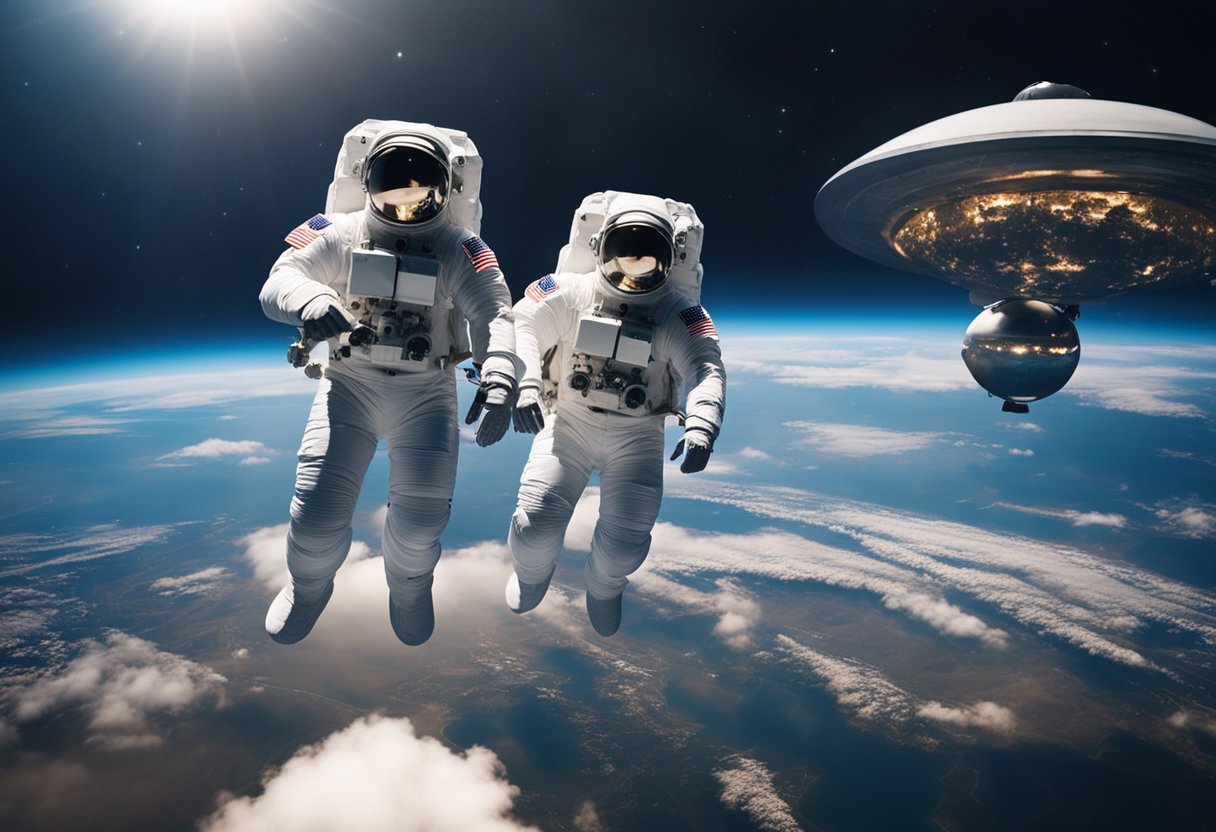
As we discuss The International Space Station (ISS), we’re focusing on what it’s like to live on it, the research conducted, and the daily routines.
The ISS orbits Earth in what is known as Low Earth Orbit (LEO), roughly 400 kilometres above our planet. This unique position allows astronauts and researchers an unparalleled vantage point not only to observe Earth but also to experience weightlessness, or microgravity. This environment presents both challenges and possibilities for those aboard.
Aboard the ISS, a variety of space missions have set out to explore the effects of microgravity. NASA, along with international partners, has turned the ISS into a state-of-the-art laboratory. From studying biological processes to testing materials, the research here aids in enhancing our understanding of science and preparing for future deep space exploration.
Astronauts living on the ISS adapt to an extraordinary set of circumstances in low Earth orbit. Their daily life includes:
In the unique conditions of a microgravity environment, we gain insights into scientific phenomena not observable on Earth. This enhances our understanding of a vast range of disciplines.
Microgravity enables us to study fundamental physical forces, such as surface tension and buoyancy, which behave differently without the influence of Earth’s gravity. Experiments focus on convection and diffusion processes, particularly Marangoni convection, due to variations in temperature and surface tension. Researchers employ methods of simulated microgravity, such as random positioning machines and clinostats, which effectively neutralise gravitational effects on a small scale.
Microgravity research has profound implications for biology and medicine. For instance, cancer cells are studied under these conditions to observe changes in growth patterns and cellular behaviour. This can potentially lead to breakthroughs in oncology. Additionally, we leverage microgravity to carry out proteomics research, enhancing our understanding of protein structures and functions, which could pave the way for new medical treatments and drugs.
In microgravity, the absence of buoyancy-driven convection allows for the study of materials and fluids in a way that cannot be replicated on Earth. We examine the solidification processes in alloys, which are essential for improving materials used in aerospace and high-tech industries. Research in fluid dynamics explores how fluids behave when the usual variables, like buoyancy and sedimentation, are removed, leading to better models and systems in various engineering applications.
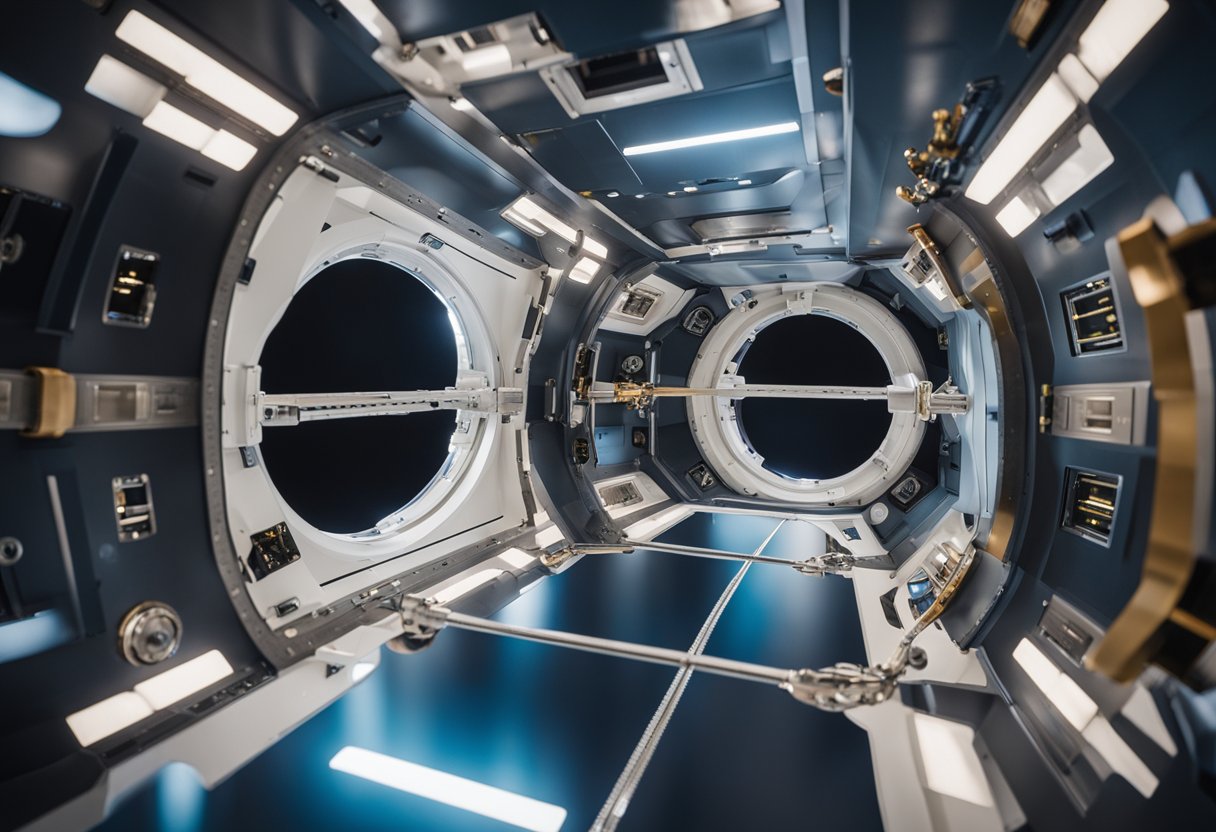
In this section, we discuss state-of-the-art technologies designed to replicate conditions of microgravity here on Earth. These innovative methods allow us to study the effects of low gravity on biological organisms, physical systems, and even on potential future space tourists documenting their experiences on platforms like SpaceVoyageVentures.com.
Ground-based analogues are essential for simulating the effects of microgravity. Clinostats and random positioning machines (RPMs) are two primary types of analogue devices. Clinostats rotate slowly to minimise gravity-driven processes within biological samples, effectively simulating a constant free-fall state.
On the other hand, random positioning machines move in multiple axes, disorienting the sense of direction and thus negating gravity’s influence over time, which serves to mimic the microgravity environment.
Drop tower experiments provide another avenue for microgravity simulation. In these controlled settings, experiments are dropped from a considerable height, typically within a vacuum chamber, creating several seconds of weightlessness—essentially microgravity conditions—as the apparatus free-falls to the ground. This brief period of simulated zero gravity is invaluable for conducting short-term experiments and observing immediate reactions in various scientific studies.
One of the more intricate devices for simulating microgravity is the rotating wall vessel (RWV). This apparatus creates a suspended state for cell cultures, allowing them to grow in three dimensions, which closely parallels how cells behave in space. The RWV and other similar hardware solutions provide continuous rotation, counteracting gravitational sedimentation and thus enabling sustained microgravity simulation for a range of research applications, from biological studies to material science.
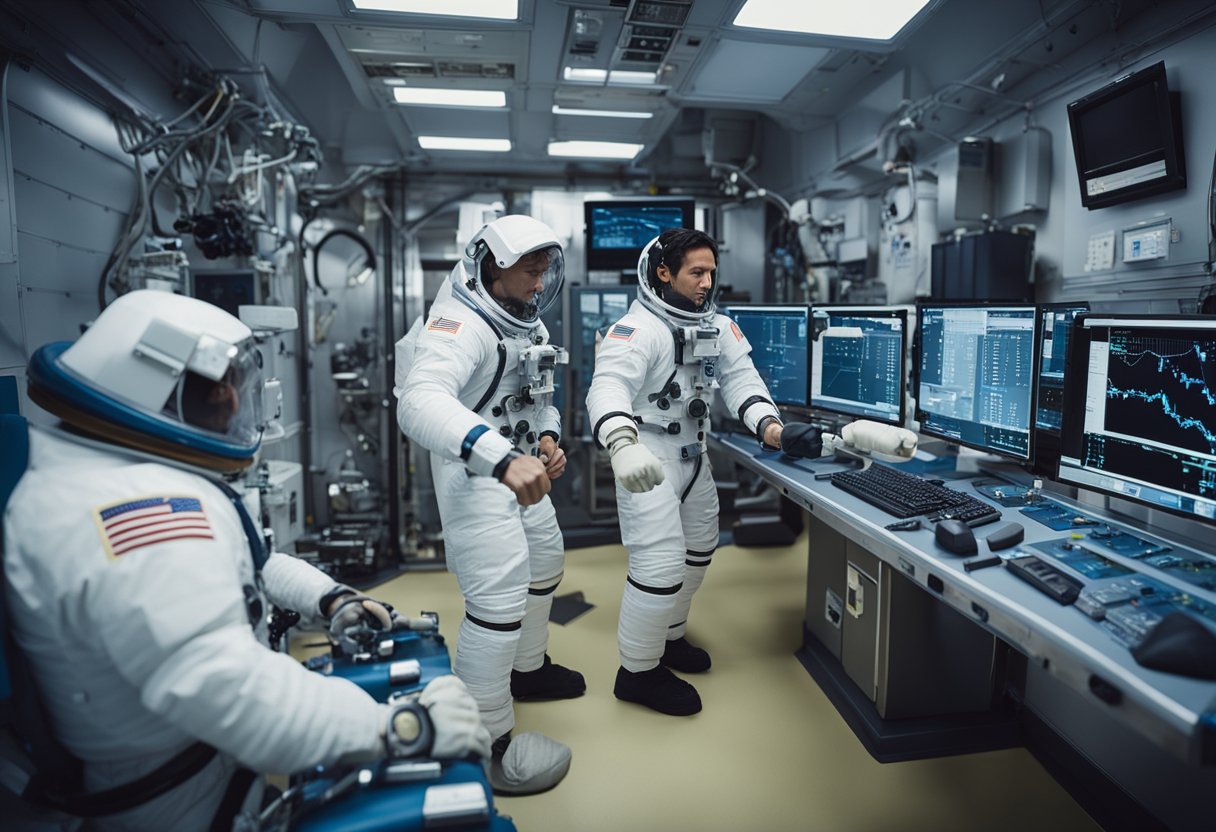
In our journey to understand the human body’s adaptation to microgravity, it’s essential to recognise specific health risks associated with space travel and the development of various countermeasures.
We are aware that in the microgravity environment of space, our bones and muscles are subjected to significantly less mechanical stress compared to Earth, leading to osteoporosis and muscle mass reduction. Osteoblasts, the cells responsible for bone formation, become less active, while osteocytes, cells that form the bulk of our bone tissue, experience alterations.
Similarly, our skeletal muscles undergo atrophy due to diminished use. As countermeasures, we’ve looked into resistive exercise regimes that have proven to maintain muscular strength and bone density, similar to weight-bearing exercises on Earth. Our nutritional strategies also involve supplements like vitamin D and calcium to mitigate bone loss.
The reports of vision impairment among astronauts have led us to investigate its causes and develop appropriate countermeasures. The lack of proper fluid distribution in microgravity appears to increase pressure on the eyes, potentially harming the optic nerve. To address these concerns, specially designed eye exercises and equipment to monitor ocular health are in use. Additionally, adjusting the spacecraft’s environmental conditions and the potential use of specific medications are being evaluated as part of ongoing countermeasures.
Among other health issues that may arise during space travel, we are particularly vigilant about kidney stone formation due to alterations in fluid and mineral balances within the body. Our countermeasures in this area include maintaining hydration levels and monitoring dietary intake.
Moreover, to address the broader spectrum of potential health concerns, comprehensive healthcare protocols that involve both in-flight and pre-flight measures are consistently being refined. These include immunizations, screening and the provision of medical kits designed to handle an array of health issues in space.
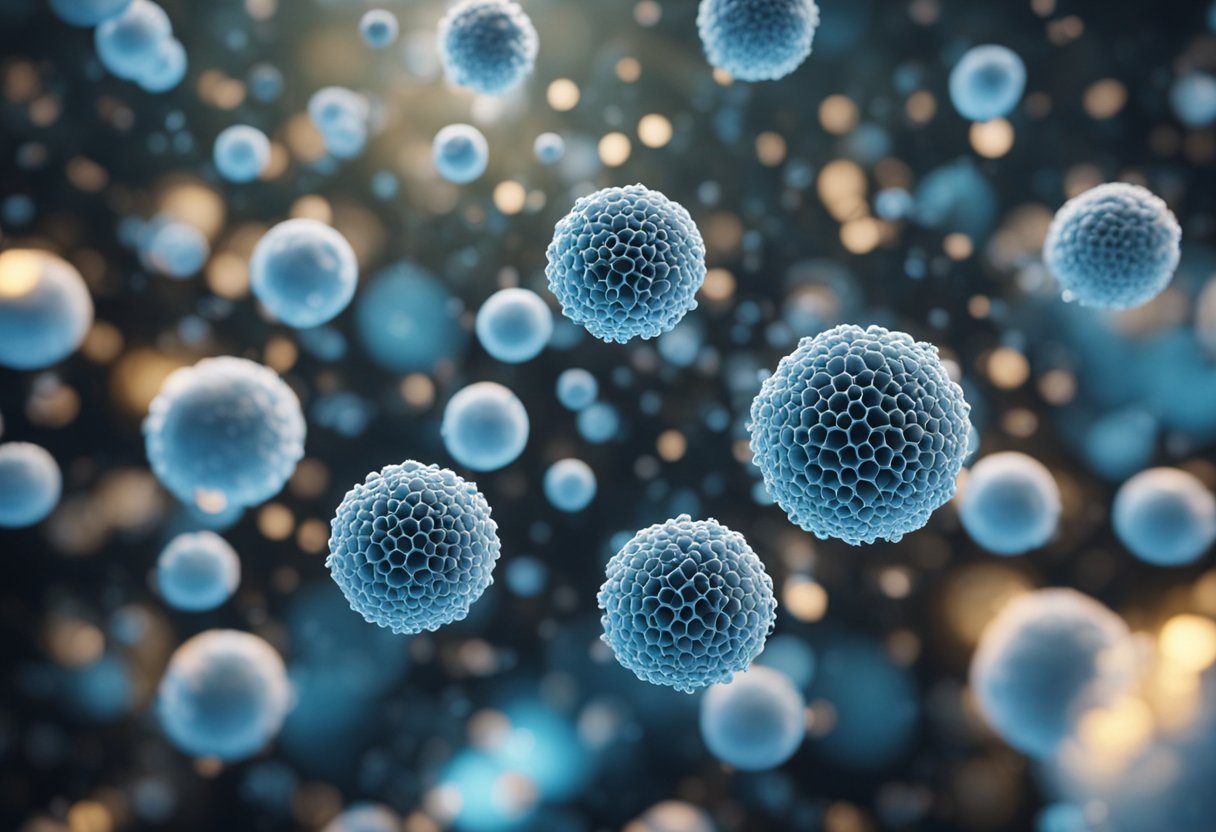
In microgravity, cellular mechanics undergo significant changes as the usual gravitational cues that cells experience on Earth are absent. These adaptations impact cell structure, behaviour and function.
The cytoskeleton provides structural support for cells and is integral to cell adhesion, shape, and internal organisation. In microgravity, there’s a reduction in cytoskeletal integrity and a subsequent decrease in the quality of cell adhesion. Cellular adhesion is fundamental for maintaining tissue structure and cellular communication. Studies demonstrate how microgravity can lead to alterations in the cytoskeleton that affect cell adhesion molecules and influence contact with extracellular matrix and other cells.
Our cell morphology is typically defined by the cytoskeletal configuration, which can change in microgravity environments. This influences cellular functions and can lead to a more rounded cell shape. Additionally, cell motion, including the sedimentation of cells, is markedly different. The lack of gravitational forces affects how cancer cells move and interact, which could alter their metastatic potential. Understanding these changes is critical for managing astronaut health and studying cancer behaviour.
The absence of normal gravity affects gene expression and regulation in cells, altering their function and potentially impacting translation processes. Research has shown changes in how genes are expressed in microgravity, which can have significant effects on cellular function and overall organism health. Specifically, microgravity can influence the activities of genes involved in cell growth and maintenance, and these changes can have implications for diseases like cancer. Our understanding of these changes is essential for developing countermeasures to protect the health of astronauts on long-duration space flights.
Physical processes undergo significant changes in microgravity environments, where the usual forces experienced on Earth are greatly diminished or altered. In microgravity, or zero gravity, familiar behaviours of fluids and heat no longer apply as they do under Earth’s gravitational pull, leading to unique challenges and considerations for space travel and living.
In the absence of gravity, the principles of fluid dynamics shift markedly. Buoyancy becomes negligible, as there is no weight force causing lighter fluids to rise above denser ones. This lack of convection currents in fluids means that layers of varying temperatures or concentrations do not naturally form or mix. Instead, diffusion becomes the dominant force driving the movement of molecules, although it’s a slower process compared to convection. The behaviour of surface tension also becomes more prominent in microgravity, where it governs the movement and contact angles of liquids.
Without gravitational forces, heat transfer through convection is substantially different. Without buoyancy-driven convection, heat distribution relies more heavily on conduction and radiation. This presents unique challenges for thermal management systems in spacecraft, as heat from electronics and human occupants doesn’t rise and needs to be directed away using alternative methods. Layers of heat don’t form as they would on Earth, necessitating careful planning for temperature control.
Combustion and fire behave unpredictably in a microgravity environment. The absence of buoyancy means flames in space assume a spherical shape due to uniform gas pressure in all directions. Furthermore, combustion produces fewer reactive oxygen species (ROS) because the process is slower and more diffuse without gravity to assist in the convection of heat and gases. This altered combustion process can impact the efficiency and safety of burning materials in space and must be managed with utmost precision.
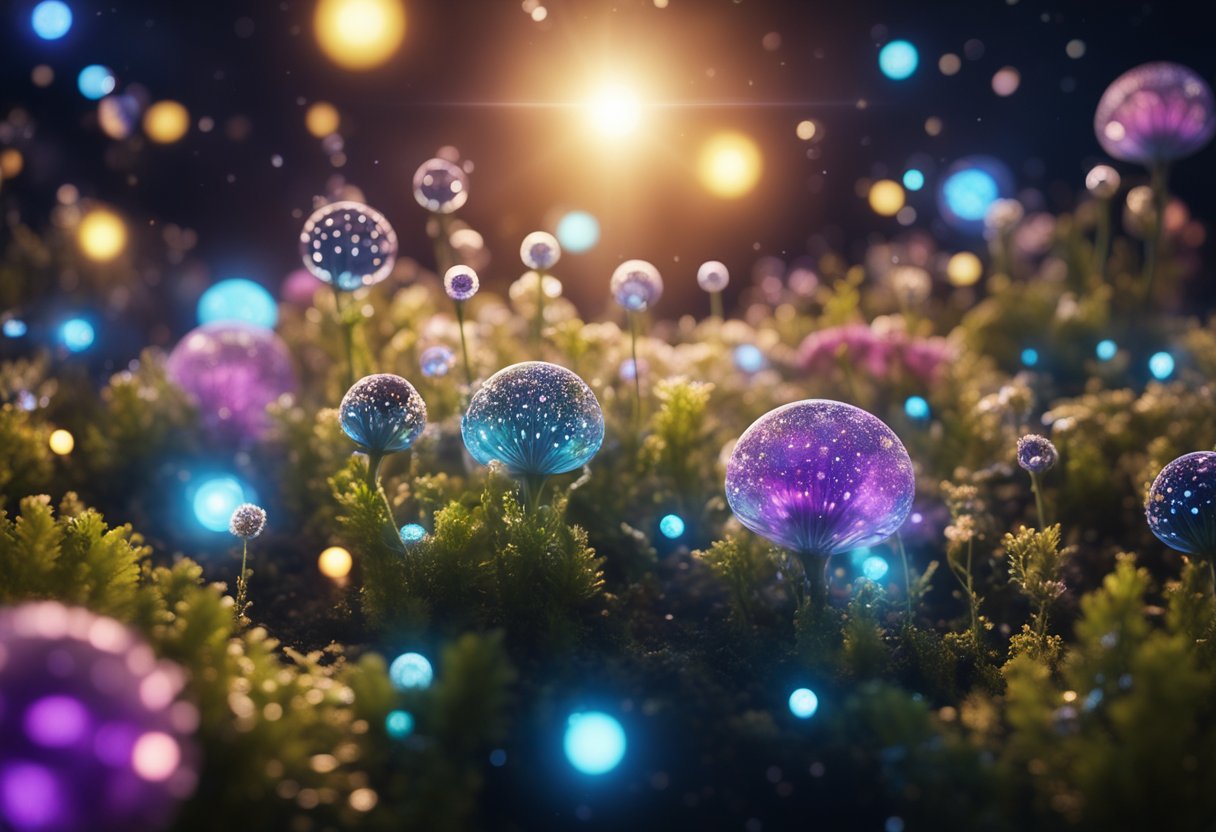
In our pursuit to understand life’s potential in the cosmos, we’ve extended our research into the realms of microgravity. Our investigation not only addresses how organisms adapt to these unique conditions, but also how these adaptations may influence our quest for extraterrestrial life.
Ants are a focus for our research due to their social behaviour and ability to navigate and adapt to new environments. We’ve observed that in low Earth orbit, ants adjust their search patterns when released in microgravity. On the International Space Station, they’ve shown the ability to recalibrate their movements to find their way back to their colonies despite the absence of gravity. This research gives us insights into how life can adapt to space travel and the potential for colonies to thrive in off-Earth environments.
Our lunar expeditions act as stepping stones in our quest to extend human spaceflight further into the solar system. Through the Artemis program, we aim to return astronauts to the moon, establishing a sustainable presence to prepare for future missions to Mars.
The moon’s low-gravity environment provides a testing ground for technologies required for deep-space travel, and the lessons we learn will lay the groundwork for our journey to Mars and beyond. On these celestial bodies, we’ll deploy spacecraft equipped with the tools necessary to assess the viability of life, gleaning knowledge that could change our understanding of life’s potential in the universe.
In gearing up for extended sojourns into the cosmos, we focus on the human and technological facets imperative for success.
Extended space missions pose a multitude of challenges to the human body, given the unusual and harsh conditions of space. In microgravity, the absence of gravity induces significant changes, including alterations to vision, cardiovascular health, and bone density. To prepare individuals for these challenges, agencies like NASA incorporate rigorous training regimes that simulate weightlessness using facilities akin to the Neutral Buoyancy Lab, thus familiarising astronauts with the sensations and demands of microgravity.
Preparing spacecraft for deep space missions entails addressing both technological and logistical hurdles to ensure safety and mission success.
By parsing and assimilating the lessons from past missions to the Moon and the International Space Station, we refine our approach to upcoming challenges, standing on the threshold of an era marked by frequent and advanced space missions. Moreover, with the advent of companies and platforms like SpaceVoyageVentures.com, we’re extending these horizons to the wider public.

In this section, we address some common queries regarding the microgravity environment experienced by astronauts and how it impacts both human physiology and scientific studies. Our insights draw from established research to give you a well-rounded understanding of life in low gravity conditions.
Astronauts undergo extensive training to adapt to microgravity, simulating conditions in aircraft performing parabolic flights that create short periods of weightlessness. They learn to orient themselves and move with precision in an environment where traditional up and down orientations no longer apply.
In microgravity, astronauts may experience muscle atrophy, bone density loss, and fluid redistribution, affecting their vision and cardiovascular system. These changes are due to the body’s response to the absence of gravity acting on the body’s tissues and fluids.
Microgravity offers a unique setting for scientific experiments, allowing the study of phenomena without Earth’s gravity interference. This can lead to breakthroughs in fields like fluid dynamics, combustion, and materials science, as well as biological and medical research.
Tasks in microgravity, including simple daily activities or complex scientific procedures, require new techniques as earthly norms like sedimentation, convection, and fluid behaviour are altered. Even minor forces can set objects adrift, complicating manual work.
Experiments on Earth can mimic microgravity briefly using drop towers or parabolic flights, but they cannot fully replicate the continuous microgravity environment of space. Thus, Earth-based experiments provide limited data compared to those conducted on space stations.
To combat the negative effects of microgravity on health, astronauts follow a strict routine that includes exercise, dietary management, and medical monitoring. These measures are essential to ensure their well-being during and after their missions.